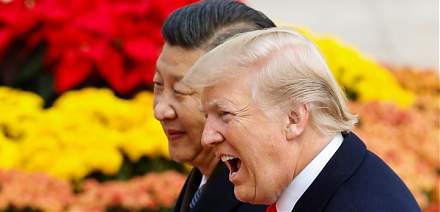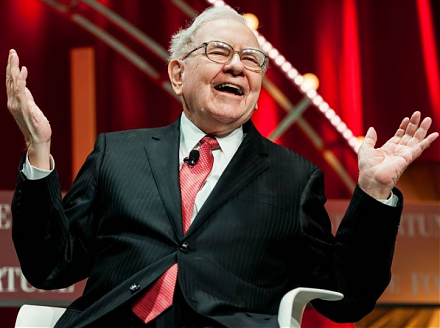

2023-10-07 10:24:00 Sat ET
stock market technology facebook covid-19 apple microsoft google amazon data platform network scale lean startup artificial intelligence antitrust alpha patent model tech titan unicorn tesla global macro outlook
Thomas Philippon (2019)
The great reversal: how America gave up on free markets
Thomas Philippon presents both empirical facts and policy implications to highlight the different aspects of the recent rise of market power in America. Product market concentration has increased in America but not in Europe. A lack of product market competition can often result in a pervasive decline in capital investment, a decline in technological innovation, and a broad slowdown in wage growth. The recent rise of market power in America, and the different outcome in Europe, are due to policy choices with respect to antitrust merger review by the Department of Justice (DOJ) and the Federal Trade Commission (FTC). In this view, Philippon focuses on the adverse impact of market power on capital investment and productivity growth in America. The macroeconomic policy implications include the pervasive decline in high-skill labor productivity and the negative effects of less intense product market competition on wage growth and inequality.
One question is how most inadequate policy choices with respect to merger review and antitrust enforcement appear to tilt market power. A different question is how technological change bolsters market power in the current antitrust policy regime. A lot of evidence helps support the technological change hypothesis in addition to lax antitrust enforcement. U.S. merger review and antitrust policy choices tend to serve as the dominant explanation for the recent rise of market power in America. In this fundamental view, America seems quite different from Europe in terms of a lack of antitrust scrutiny.
A firm exerts market power if this firm can sell goods and services even though the price is above the marginal cost of production. In this special case, the firm makes excess profits. Under perfect competition with the law of one price, instead, a minor decrease in the price leads to losses (because the cost is higher than the revenue) and a minor increase in the price leads to zero sales (as customers can choose to buy from competitors). Under fierce competition, the firm faces a highly elastic (flat) residual demand. Alternatively, a firm with market power faces a residual demand elasticity less than infinity. As a consequence, this firm with market power can set prices above the respective marginal costs. In order to gauge the extent of market power, industrial economists often need to measure the discrepancy between the output price and the marginal cost. In this light, the appropriate measure is the core price markup. In order to account for overhead costs, industrial economists often further need some measures of profitability.
Because it is difficult to measure marginal costs and prices, the empirical literature infers market power from product concentration ratios. The Herfindahl-Hirschman Index (HHI) is the sum of the market share squares in percentage terms. A perfect monopolist has a 100% market share, hence the HHI is 10,000. In comparison, all firms have an infinitesimal market share with a zero HHI under perfect competition. The major advantage of the HHI is its simplicity. The HHI only requires sales data for all firms in each product market. In the absence of data on all firms, economists use some variants of product concentration ratios of the top n firms (where n often denotes the number of product market leaders).
Philippon recognizes the essential need to assess profits and prices in addition to product market concentration ratios because concentration alone is not a reliable indicator of competition (Philippon, 2019, pp.35). The HHI as a measure of product market concentration cannot serve as a reliable measure of market power for many reasons. First, there is no universal link between market power and concentration. The HHI relates to market power in the workhorse model of Cournot competition. In this special case, the price markup often tends to increase with the market share for each firm. Thus, the Cournot HHI increases as aggregate market power rises. In most other models of economic competition, however, more market power leads to lower concentration and therefore a lower HHI through the selection of potential entrants in response to the substitutability between heterogeneous goods (Melitz, 2003; Melitz and Ottaviano, 2008).
Second, the HHI often depends on how we define each market. From time to time, the market definition depends on the product, the industry, the geography, and the population density. It is problematic for industrial economists to rely on some static market definition to analyze the evolution of market power.
Third, ordinary least-squares (OLS) regressions with markups on the left-hand side and HHI on the right-hand side cannot provide a clear interpretation of the relation between price markups and concentration ratios. Product market concentration is often an endogenous outcome. There is no clear instrumental-variables approach because price markups and concentration ratios depend on all the components of preferences, technological considerations, prices, sales, and marginal costs etc.
Philippon focuses on the partial effect of concentration ratios on productivity growth rates ceteris paribus (Philippon, 2019, pp.77). It may well be true that high product market concentration leads to low productivity ceteris paribus. However, industrial economists cannot infer this tentative conclusion from the OLS regression results. More rigorous econometric analysis requires the use of both relevant and exclusive instrumental variables in the more general methods of moments (GMM).
Beyond the identification concern, an additional issue arises from the fact that the important productivity measure recurs at the firm level but not the industry level. In practice, most of the recent rise of market power arises from some superstar firms within the same industry in stark contrast to some dominant industries (De Loecker, Eeckhout, and Unger, 2020). For instance, oligopolistic competition prevails in the high-tech and semiconductor industries. Most smaller firms face fierce competition from the dominant oligopolists.
Apart from the use of the HHI as a measure of product market concentration, Berry, Levinsohn, and Pakes (1995) and their followers analyze a structural model of both market power and oligopolistic competition in the specific context of each product market (e.g. automobile, breakfast cereal, cement, and so on). Under several core assumptions about consumer preferences, production technology, market conduct, and data on prices and quantities, this demand approach generates individual firm-level markups (i.e. prices over marginal costs). Industrial economists can use the firm-level micro estimates of markups to analyze the economy-wide distribution of market power over time. These industrial economists focus on the distribution of markups and all the moments in association with this distribution. These moments include the joint distributions of markups, sales, market shares, cost shares, and elasticities. In fact, each different distribution of markups can give rise to the same HHI. Once these industrial economists take into account the firm-specific overhead costs and the user costs of capital, these economists calculate the firm-level profits in addition to markups.
Aggregate markups and profits have increased since the 1980s, with episodes of sharp increases during 1980-2000 and 2010-present, and an episode of no change during 2000-2010. Across the distribution of markups, there are huge increases in the top percentiles, whereas, the median remains constant over time. Hence, the recent rise of market power accords with the rise of dominance by some superstar firms at the expense of most other smaller firms. Several large firms dominate the vast majority of other firms as well as the rest of the economy. In America, 67% of the recent rise of market power arises from the reallocation of market share toward high-markup firms (and only some part is due to the increase in markups per se). Again, this evidence is consistent with the superstar firm hypothesis (Autor, Dorn, Katz, Patterson, and Van Reenen, 2020).
We can consider RAM memory microchips as an example. With the semiconductor microchips, we would find a massive decline in the price (well above the marginal cost). Due to technological progress, the number of semiconductor transistors in an integrated circuit doubles every 2 years (Moore’s law). For this reason, we can expect to see a massive decline in the unit price of high-quality memory capacity. However, the pervasive price decrease need not suggest more intense competition. There are huge differences across the semiconductor sector for the price evolution. Most high-tech products and online services have experienced a similar decline in absolute prices. In contrast, education and health care services have experienced an increase in absolute prices. To evaluate whether there is more or less intense competition, we need to evaluate the price relative to the marginal cost but not just the price level.
Philippon gauges the persistence of market power by focusing on the top percent of firms (or superstar firms). This quantitative assessment shines fresh light on how static or dynamic the market is (Kehrig and Vincent, 2017). This feature relates to the impact of market power on the startup rate of firms, or the reallocation of high-skill labor (De Loecker, Eeckhout, and Mongey, 2021). Indeed, market power can affect the open market transmission of cost shocks. This transmission then affects the adjustment rate of factor inputs (labor and capital) as well as the incentives for lean startups to enter the market. With respect to the recent rise of market power, only several superstar firms tend to dominate each oligopolistic product market. In fact, these superstar firms can often charge higher prices well above the respective marginal costs.
Philippon points out the comparison of America to Europe that there has not been the same rise of market power outside America. In Europe, fierce open competition helps keep lower prices, especially in the market for smart phone plans and online services such as stock market data provision and education. The re-allocation of market share from low-markup to high-markup firms is more pervasive in America than in Europe. Also, superstar firms tend to dominate specific high-tech markets in America. Some good examples of superstar firms include Meta, Apple, Microsoft, Google, Amazon, Nvidia, and Tesla (MAMGANT) in social media, software, mobile connectivity, online search and advertisement, microchip production, e-commerce, cloud service provision, and electric car production etc. Philippon presents his key punchline that if technology were responsible for a decline in antitrust enforcement in America, we would observe similar trends on both sides of the Atlantic (Philippon, 2019, pp.147).
Although there is a pervasive decline in antitrust enforcement in America, at least part of the recent rise of market power arises from technological innovation. If the evolution of market power moves in tandem in both America and Europe, both anti-trust enforcement and technology are serious contenders for industrial economists to explain the European experience. A good example is the Facebook merger with Instagram and WhatsApp.
Facebook keeps and entrenches its monopoly power in the market for social media. Facebook acquires its potential competitive threats (e.g. Instagram and WhatsApp) to shore up its social media market position. In addition to these killer acquisitions, Facebook tips the social media market toward durable tech monopolization. Some recent internal documents show that the main Facebook family of online products and services (such as Instagram, WhatsApp, Messenger, and Oculus etc) seems to experience more considerable internal competition for global users than external competition in response to most other social media outlets (such as LINE, Pinterest, Reddit, Snapchat, WeChat, and so forth). It is probable for these internal products and services to shore up one another through collusion. Facebook applies a variety of anti-competitive business practices to sustain its durable market power. In effect, Facebook leverages data-driven competitive moats and market insights to identify nascent high-tech potential threats, and so Facebook acquires, copies, or cuts off these competitive threats through killer acquisitions or social media embargoes. In these important ways, Facebook weakens many other social networks, especially if Facebook perceives these social media outlets as real, nascent, or even potential competitive threats. In the absence of intense competition, several Facebook anti-competitive business practices lead to mobile software quality deterioration, result in worse privacy protection for global social network users, and may further cause misinformation and data breach (e.g. the Cambridge Analytica data debacle).
Many economists agree that Facebook should never have been allowed to acquire Instagram and WhatsApp. The social media tech titan benefits from great network effects, scale economies, and information cascades. Network effects often tend to arise from low and even zero marginal costs as the social network expands in size with exponential growth. Specifically, the marginal cost of acquiring each additional online user is almost zero for the social media outlet. At the same time, each extra user brings in greater personal data and online ad revenue in the longer run. Also, scale economies arise from the fact that the average cost declines dramatically as the social media outlet further increases the size of the social network platform. In practice, this major feature allows Facebook to become more profitable over time. Information cascades reflect the fast transmission of key information from Internet influencers and key opinion leaders across the entire social media outlet with more than 2 billion active users each month.
Several tech titans can enhance competition through positive feedback loops and network effects. Some antitrust regulation can help force these tech titans to admit new competitors on the respective incumbent platforms at lower prices set by the regulators, the Department of Justice (DOJ) and the Federal Trade Commission (FTC). By contrast, interoperability can often be the technical reason why each cell phone plan in Europe costs almost half of what it costs in America. The European incumbent telecom operators have to allow competitors to use their respective cell phone tower networks. As a result of this simple regulation, there are at least 150 telecom operators in Europe, whereas, there are only 4 main telecom operators in America (AT&T, Verizon, T-Mobile, and Sprint). In the market for cell phone plans, the European telecom operators face fierce competition in the substantially more contestable environment.
With market power, oligopolists are able to raise prices well above the respective marginal costs. These oligopolists choose to reduce the quantity of production and so the value of their factor inputs such as labor and capital. The resultant decline in capital investment further dampens productivity growth (Gutierrez and Philippon, 2017; Hartman-Glaser, Lustig, and Zhang, 2019; Barkai, 2020). In addition, there are some other macroeconomic ripple effects. First, the broad rise of market power leads to some general equilibrium effect on wage growth. This general equilibrium effect explains the gradual decline in the labor share and labor force participation. This evidence can serve as an important determinant of the secular trend of wage stagnation. Despite the rise of global GDP, real wages have remained constant in recent decades as a result of the recent rise of market power.
Second, the recent rise of market power can result in a pervasive decline in labor turnover. In America, the labor re-allocation rate has declined by about 50% even though there has been no or little decline in the volatility of firm-level shocks. Firms with higher markups face a steeper residual demand curve. As a result, any shocks cause smaller price changes and input adjustments of both labor and capital.
Third, the decline in labor turnover can often lead to a pervasive decline in intercity and interstate migration rates (Kaplan and Schulhofer-Wohl, 2012). Partial labor transmission drives the decline in the startup rate (Karahan, Pugsley, and Sahin, 2019). All of this evidence leads to the empirical fact that the recent rise of market power can exacerbate wealth and income inequality in America.
The recent rise of market power pertains to the rise in the upper tail of the market power distribution. Only a few firms experience a massive increase in markups and profits. In order to be able to better assess the economic welfare implications, we need to understand the different sources of market power (such as network effects, scale economies, and information cascades etc). Philippon argues that the market power differences between America and Europe reflect antitrust policy choices. In fact, technological progress can serve as a complementary explanation for the rise of market power in America. How should we reform antitrust enforcement? What position do we take on mergers and acquisitions? Philippon talks quite a lot about diseases and symptoms, but little about the viruses and bacteria as root causes of these diseases, and even less about the effective medications and treatments.
Regulation is the essential requirement for the steady state of the capitalist system. Without the rule of law and the protection of property rights, there is no trade (and neither free trade nor fair trade). Regulation is a necessary requirement for the key capitalist system to work well in practice. In a capitalist economy with no property rights, there is no exchange but only subsistence. Since the deregulation in several markets (airlines, telecoms, and utilities etc) in the early-1980s, there has been a stark rise of market power. Superstar firms have been able to build-and-keep their market power. Technological progress tends to favor first-mover advantage. This advantage often allows superstar firms to consolidate market dominance within a relatively short time frame. As these superstar firms grow exponentially in size over time, they launch killer acquisitions in order to impede any threats of new entry.
A pro-market view requires proactive regulation in an optimal amount. There must be enough regulation for the DOJ and FTC etc to ensure that most superstar firms cannot entrench their dominant position to earn excess profits for an indefinite time frame. There must not be too much regulation where regulation creates inefficient economic outcomes. Patent legislation is a good example. Some regulation should be essential, but only the right amount can lead to efficient outcomes. The patent legislation requirements can be quite different for medicine and mobile technology. When push comes to shove, the basic law of inadvertent consequences counsels caution.
This analytic essay cannot constitute any form of financial advice, analyst opinion, recommendation, or endorsement. We refrain from engaging in financial advisory services, and we seek to offer our analytic insights into the latest economic trends, stock market topics, investment memes, personal finance tools, and other self-help inspirations. Our proprietary alpha investment algorithmic system helps enrich our AYA fintech network platform as a new social community for stock market investors: https://ayafintech.network.
We share and circulate these informative posts and essays with hyperlinks through our blogs, podcasts, emails, social media channels, and patent specifications. Our goal is to help promote better financial literacy, inclusion, and freedom of the global general public. While we make a conscious effort to optimize our global reach, this optimization retains our current focus on the American stock market.
This free ebook, AYA Analytica, shares new economic insights, investment memes, and stock portfolio strategies through both blog posts and patent specifications on our AYA fintech network platform. AYA fintech network platform is every investor's social toolkit for profitable investment management. We can help empower stock market investors through technology, education, and social integration.
We hope you enjoy the substantive content of this essay! AYA!
Andy Yeh
Chief Financial Architect (CFA) and Financial Risk Manager (FRM)
Brass Ring International Density Enterprise (BRIDE) ©
Do you find it difficult to beat the long-term average 11% stock market return?
It took us 20+ years to design a new profitable algorithmic asset investment model and its attendant proprietary software technology with fintech patent protection in 2+ years. AYA fintech network platform serves as everyone's first aid for his or her personal stock investment portfolio. Our proprietary software technology allows each investor to leverage fintech intelligence and information without exorbitant time commitment. Our dynamic conditional alpha analysis boosts the typical win rate from 70% to 90%+.
Our new alpha model empowers members to be a wiser stock market investor with profitable alpha signals! The proprietary quantitative analysis applies the collective wisdom of Warren Buffett, George Soros, Carl Icahn, Mark Cuban, Tony Robbins, and Nobel Laureates in finance such as Robert Engle, Eugene Fama, Lars Hansen, Robert Lucas, Robert Merton, Edward Prescott, Thomas Sargent, William Sharpe, Robert Shiller, and Christopher Sims.
Follow our Brass Ring Facebook to learn more about the latest financial news and fantastic stock investment ideas: http://www.facebook.com/brassring2013.
Follow AYA Analytica financial health memo (FHM) podcast channel on YouTube: https://www.youtube.com/channel/UCvntmnacYyCmVyQ-c_qjyyQ
Free signup for stock signals: https://ayafintech.network
Mission on profitable signals: https://ayafintech.network/mission.php
Model technical descriptions: https://ayafintech.network/model.php
Blog on stock alpha signals: https://ayafintech.network/blog.php
Freemium base pricing plans: https://ayafintech.network/freemium.php
Signup for periodic updates: https://ayafintech.network/signup.php
Login for freemium benefits: https://ayafintech.network/login.php
If any of our AYA Analytica financial health memos (FHM), blog posts, ebooks, newsletters, and notifications etc, or any other form of online content curation, involves potential copyright concerns, please feel free to contact us at service@ayafintech.network so that we can remove relevant content in response to any such request within a reasonable time frame.
2023-07-28 11:28:00 Friday ET

Lucian Bebchuk and Jesse Fried critique that executive pay often cannot help explain the stock return and operational performance of most U.S. public corpor
2018-09-19 12:38:00 Wednesday ET

The Trump administration imposes 10% tariffs on $200 billion Chinese imports and expects to raise these tariffs to 25% additional duties toward the end of t
2024-05-27 03:23:34 Monday ET

Stock Synopsis: Life insurers emphasize profit margins over sales growth rates. We review and analyze the recent market share data in the U.S. life insur
2018-11-27 10:37:00 Tuesday ET

Warren Buffett offloads a few stocks from the Berkshire Hathaway portfolio in mid-November 2018. The latest S.E.C. report shows that the Oracle of Omaha sol
2025-06-28 10:39:00 Saturday ET

Former New York Times science author and Harvard psychologist Daniel Goleman explains why great mental focus serves as a vital mainstream driver of personal
2023-05-27 11:30:00 Saturday ET

Bank failure resolution and financial risk management: Silicon Valley Bank, Signature Bank, and First Republic Bank. What are the main root cau